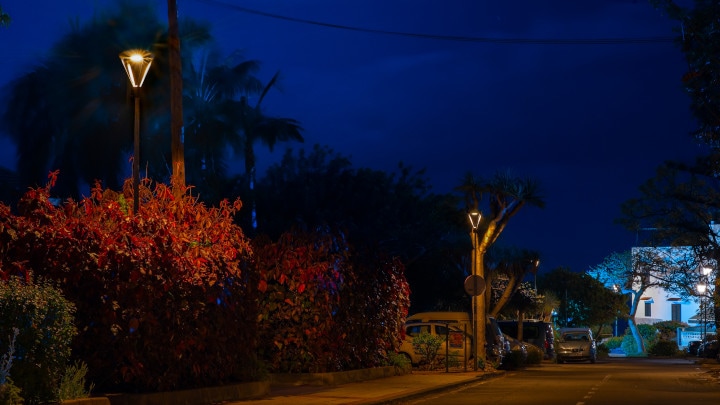
In Puerto de la Cruz, a city on the north coast of Tenerife, the company has installed smart LED street lights that can be dimmed remotely and which use special optics to reduce light spillage that could interfere with nearby observatories.
The project is an example of how we’re pushing the boundaries of LED lighting technologies. Sky glow caused by light spilling from cities into the night sky is an issue for astronomers the world over. The Milky Way is hidden from more than one-third of humanity, including 60% of Europeans and nearly 80% of North Americans. Our street lights are fitted with LED modules with special optical plates that filter out blue light and direct the light to the ground. These energy efficient street lights will also be wirelessly connected to our lighting system and management software so that they may be dimmed or turned up remotely,” said Paul Peeters, Business Leader, Professional Lighting in Europe for Signify.
Regulating the night skies
The Canary Islands has the clearest skies in Europe. It offers exceptional conditions to observe the stars and is home to several internationally renowned observatories. The quality of the sky is even protected by Spanish law (Law for the Astronomical Quality of the Instituto de Astrofísica de Canarias (IAC ) Observatories). This requires municipalities in Tenerife North and La Palma to take measures to mitigate light pollution, such as banning the use of high-pressure mercury lamps or white light lamps, with a few notable exceptions including lighting for sports and advertising.
“For astronomers and those who enjoy starlit nights, the quality of our skies is second to none. We want to preserve this precious resource and at the same time make our streets even safer for citizens and tourists,” said Lope Afonso, Mayor of Puerto de la Cruz. “This latest technology meets the needs of local observatories and will also help us to reduce the electricity we use for public lighting by around 65%, while providing us with options for future smart city services. We want Puerto de la Cruz to become one of the most innovative cities in Europe, that’s the reason why we choose to partner with Signify to introduce this ground-breaking technology to our city.”

Getting Smart
The project involves 6,000 street lights. Included is a pilot project with 100 street lights with SR luminaires that have sockets to accommodate existing and future sensors from other suppliers (such as noise, pollution, traffic monitoring, etc.) and can be paired with software applications from Signify. Testing this technology supports the municipality’s vision to explore smart city services to better serve its citizens and protect the environment. Installation of the street lights controlled by the Interact City lighting system and management software was set for completion in August.
How the astronomer-friendly lighting works

November 14, 2023
How lighting technology can help reduce risks to migrating birds